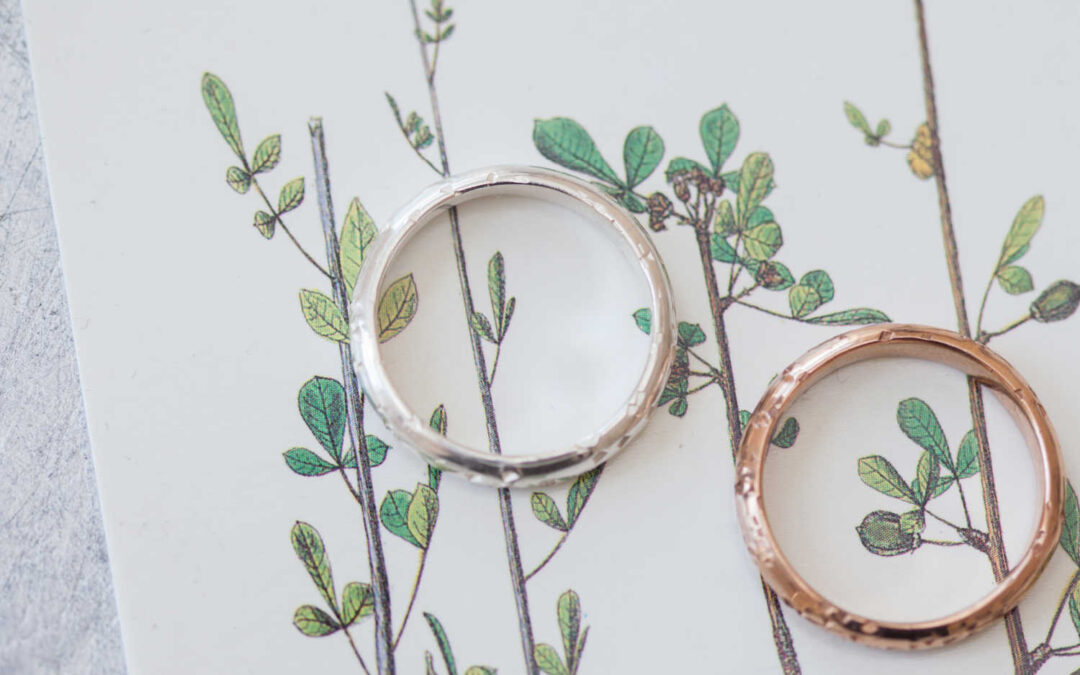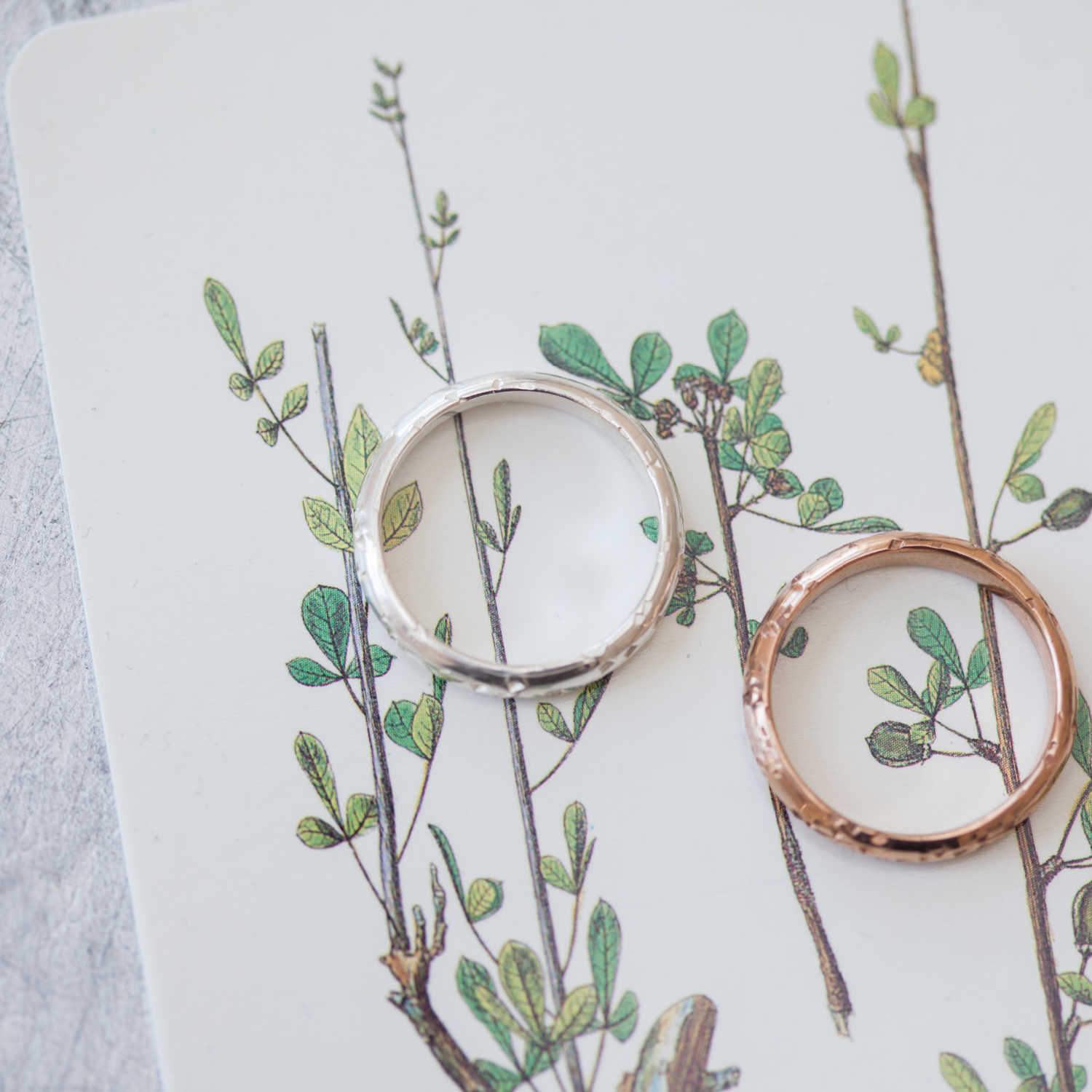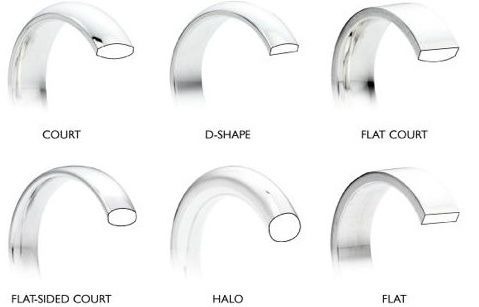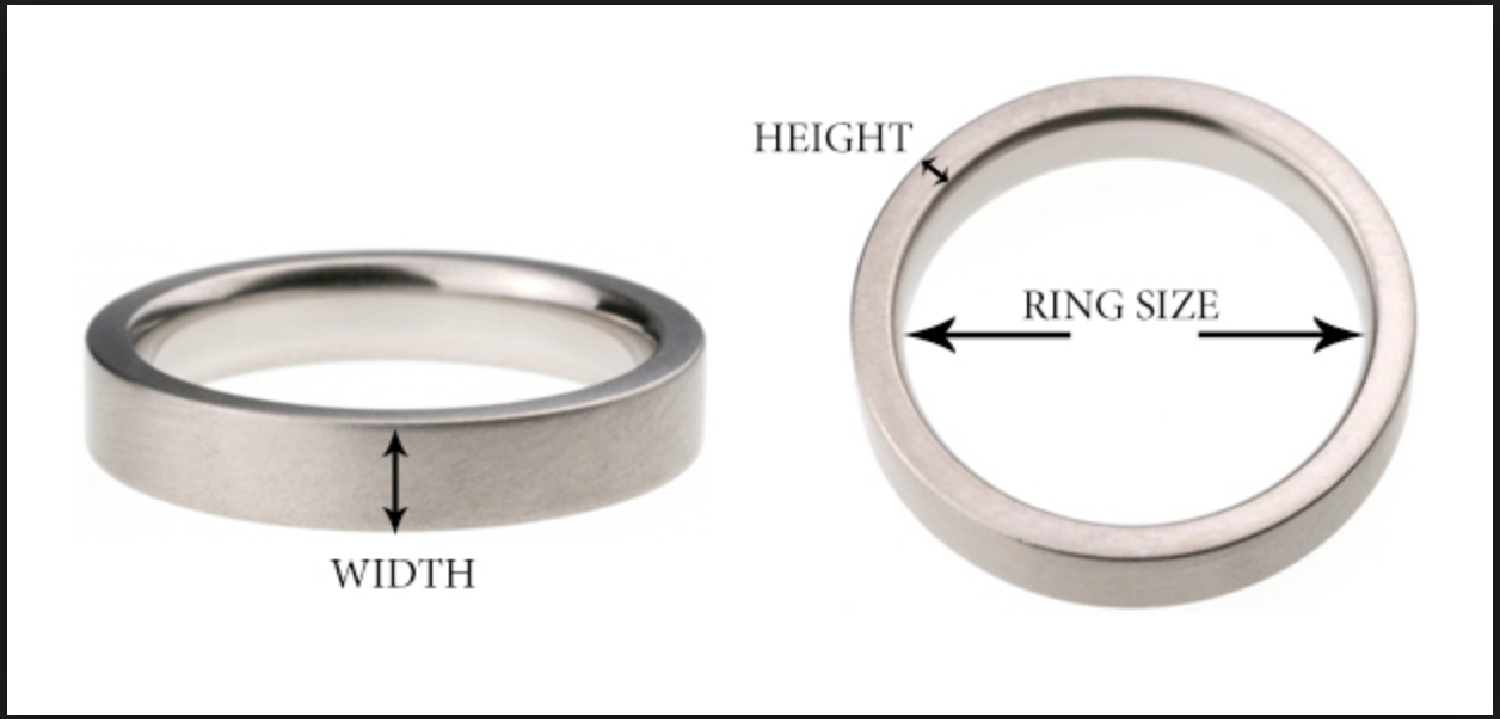
Choosing your wedding ring shape
Wedding ring shape is the first hurdle

When I start talking with couples about design ideas, choosing the wedding ring shape seems to be your first hurdle. The problem might arise from the different descriptors or language that a jeweller uses? Newly engaged partners, having measured their ring sizes, can now start on their journey to choose their wedding rings. But not understanding the lingo and the options available can make things confusing or overwhelming at first. I’ve written this article to explain to you the different wedding ring shape options. I hope this will help simplify the first step in the process of finding your perfect wedding rings.
The difference between shape and style

There are 6 main wedding ring shapes, and I don’t mean other than round. Most rings are round unless you are going for something really out of the ordinary. By the word shape we mean the shape of the ring if you were to cut a slice through the band and look at it sideways. Shape refers to the shape of the ring band itself, the metal part if you like. The image above shows a drawing of what I mean. The main 6 ring shapes are court, D shape, flat court, flat sided court, halo and flat.
Flat shaped wedding ring
If we start with the flat shaped wedding ring because it’s the easiest to describe. A flat ring band is flat on the top, flat inside and has flat edges.
D shape wedding ring
A D shape wedding ring is flat on the inside and curved on the top edge. The depth of the curve can vary making the ring lightweight, medium weight or heavy weight.
Halo shape wedding ring
A halo shape wedding ring has a completely round cross section.
Flat Court
A flat court shape wedding ring is flat on the outside and curved on the inside. It’s almost like the opposite of a D shape ring. This shape gives the illusion of being a flat shape ring but the inside curve makes it more comfortable to wear. With less metal touching the finger is doesn’t feel as wide. This shape works well for wider rings.
Court
A court shape wedding ring is curved on the outside and curved on the inside. This shape gives the appearance of a D shape ring but the curved inside makes it more comfortable to wear.
Flat sided court
Finally a flat side court wedding ring is very similar to a court wedding ring shape but with the addition of flat edges. The nearest I can compare it to is a flat shape ring but with rounded off edges. It makes it a very comfortable ring to wear. This shape works well when the height measurement is bigger.
Width vs Height of your wedding ring

It’s good to understand the dimensions “width” and “height” when you are discussing wedding ring designs. The image below helps explain the width and height measurement of a ring.
The width of your wedding ring is how wide it is across your finger. Typical ring widths are anything from 2-8mm wide.
The height of your wedding ring can also be referred to as thickness because it is determined by the thickness of the metal that’s used to make your wedding ring. A typical height of a wedding ring is 1mm-2.5mm.
Match to your engagement ring
If you are still unsure about which ring shape to pick, it might be a good idea to match these to your engagement ring, if you have one. A professional jeweller can help identify the shape, width and height of your engagement ring.
Good as Gold ?
I hope this post has defined the different wedding ring shape options available to you. It can help to try on different shaped wedding rings to see what shape and width you prefer. If you need any guidance in choosing your wedding ring feel free to contact me with any questions. You can click here to call me or here to message me. Thanks for reading, Elizabeth
